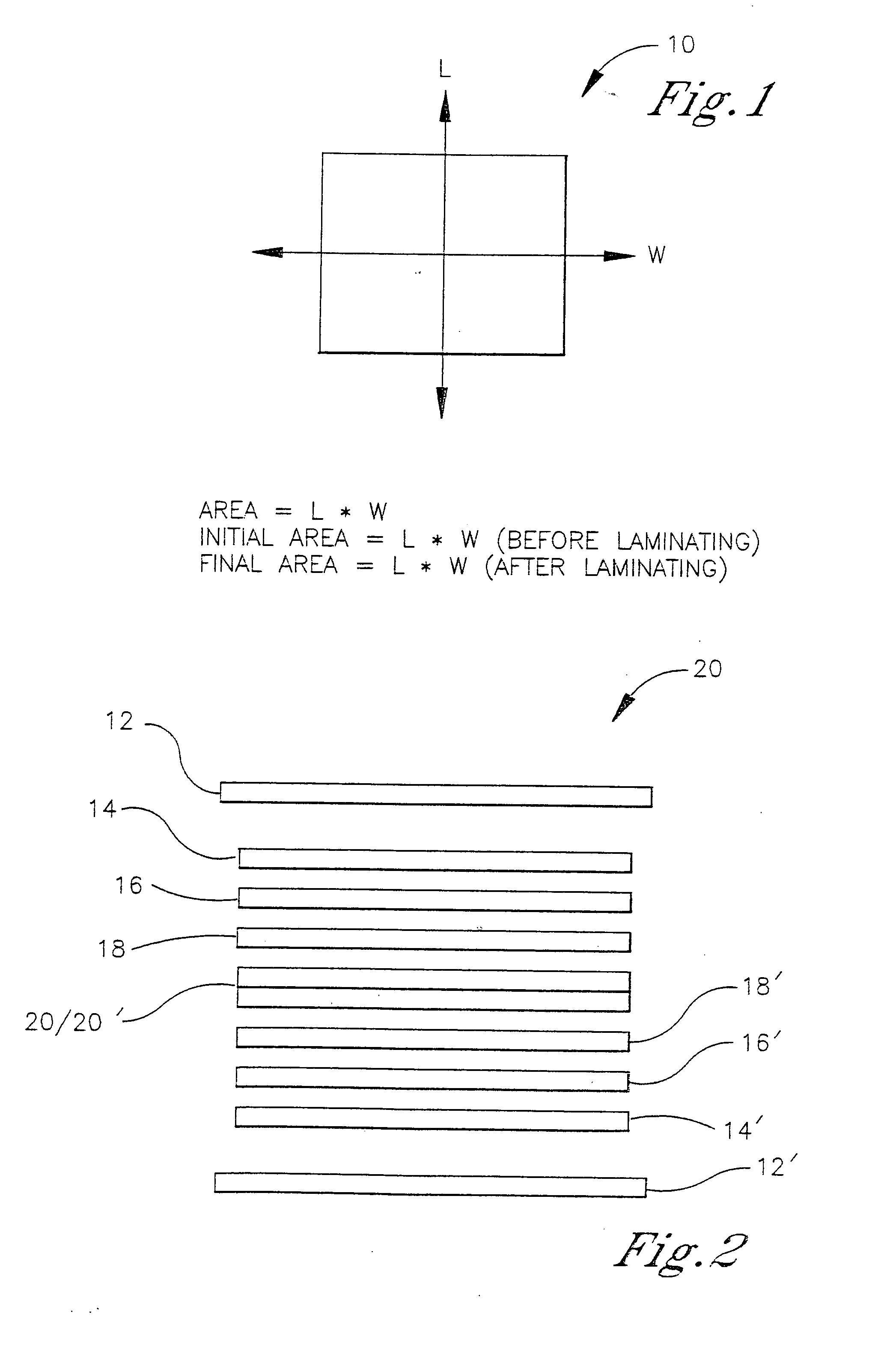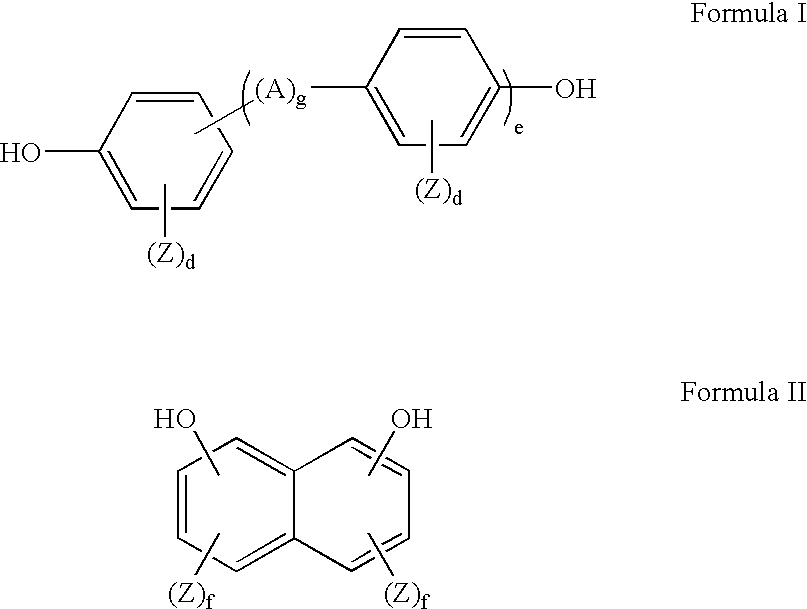Using branched polymers to control the dimensional stability of articles in the lamination process
a technology of branched polymers and lamination process, which is applied in the field of lamination articles, can solve the problems of very different processes in the lamination process of press, and achieve the effects of reducing the lamination cycle time, improving dimensional stability during lamination, and minimizing the appearance changes of inclusions
- Summary
- Abstract
- Description
- Claims
- Application Information
AI Technical Summary
Benefits of technology
Problems solved by technology
Method used
Image
Examples
example 1
[0100]Spectar and Provista were individually laminated at 120° C., 7000 lbs of ram force, for a time of 30 seconds heating after reaching a temperature within 10° C. of the setpoint. For Spectar, the initial area was 144.3 square inches and increased to a final area of 147.0 square inches resulting in an area increase of 2.7 square inches. For Provista, the initial area was 144.4 square inches and increased to a final area 146.5 square inches resulting in an area increase of 2.1 square inches.
example 2
[0101]Spectar and Provista were individually laminated at 120° C., 21000 lbs of ram force, for a time of 30 seconds heating after reaching a temperature within 10° C. of the setpoint. For Spectar, the initial area was 137.6 square inches and increased to a final area of 142.9 square inches resulting in an area increase of 5.3 square inches. For Provista, the initial area was 144.5 square inches and increased to a final area 148.4 square inches resulting in an area increase of 3.9 square inches.
example 3
[0102]Spectar and Provista were individually laminated at 120° C., 7000 lbs of ram force, for a time of 90 seconds heating after reaching a temperature within 10° C. of the setpoint. For Spectar, the initial area was 144.2 square inches and increased to a final area of 147.0 square inches resulting in an area increase of 2.8 square inches. For Provista, the initial area was 144.1 square inches and increased to a final area 146.7 square inches resulting in an area increase of 2.6 square inches.
PUM
| Property | Measurement | Unit |
|---|---|---|
| temperature | aaaaa | aaaaa |
| pressure | aaaaa | aaaaa |
| inherent viscosity | aaaaa | aaaaa |
Abstract
Description
Claims
Application Information
 Login to View More
Login to View More - R&D
- Intellectual Property
- Life Sciences
- Materials
- Tech Scout
- Unparalleled Data Quality
- Higher Quality Content
- 60% Fewer Hallucinations
Browse by: Latest US Patents, China's latest patents, Technical Efficacy Thesaurus, Application Domain, Technology Topic, Popular Technical Reports.
© 2025 PatSnap. All rights reserved.Legal|Privacy policy|Modern Slavery Act Transparency Statement|Sitemap|About US| Contact US: help@patsnap.com



